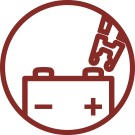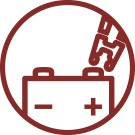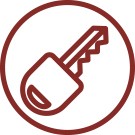 United States (English)
United States (English)
Shopping Cart
Empty Cart
Part No: {{entry.product.code}}
Quantity: {{entry.quantity}}
Total {{cartInfo.totalPriceWithTax.value | currency:"$"}}
Total {{0 | currency:"$"}}
 United States (English)
United States (English)
Part No: {{entry.product.code}}
Quantity: {{entry.quantity}}
Total {{cartInfo.totalPriceWithTax.value | currency:"$"}}
Total {{0 | currency:"$"}}
Asia Pacific
Europe, Middle East, Africa
 România (Română)
România (Română)
 European Union (English)
European Union (English)
 België (Nederlands)
België (Nederlands)
 Belgique (Français)
Belgique (Français)
 France (Français)
France (Français)
 Deutschland (Deutsch)
Deutschland (Deutsch)
 Italia (Italiano)
Italia (Italiano)
 Nederland (Nederlands)
Nederland (Nederlands)
 Polska (polski)
Polska (polski)
 Россия (русский)
Россия (русский)
 South Africa (English)
South Africa (English)
 España (Español)
España (Español)
 Украина (pусский)
Украина (pусский)
 Україна (українська)
Україна (українська)
 United Kingdom (English)
United Kingdom (English)
 Česko (Česká republika)
Česko (Česká republika)
 United Arab Emirates (English)
United Arab Emirates (English)
North America
You never know when you might need a jump start – whether it be from the bone-chilling cold of winter that can sap your battery’s starting power to leaving your lights on during a concert that drains your battery completely. Knowing how to get your vehicle running again is a valuable skill that will get you back on the road in no time. Read on for step-by-step instructions on how to safely jump a car.

When it comes to jump starting a car, you have a couple of options. You can use a portable jump starter or have another motorist assist you by charging your battery with their running vehicle and jumper cables.

Carrying a portable jump starter in your vehicle can get you back on the road in no time. From cables to power, a jump starter has everything you need to

If you don’t have room to keep a portable jump starter in your vehicle, you’ll want to make sure that you have jumper cables as part of your emergency road kit. Then you will need to call and wait for another driver and car to give you a jump. Follow these steps to get your car running again.

Running vehicle

Additional driver

Jumper cables

Make sure you’re using good quality jumper cables. Ensure that they aren’t cracked or frayed.

Park the cars close together with the front ends facing each other. You don’t want to stretch the cables too far.

Place both vehicles in

On the car that won’t start, connect the positive (red) cable to the positive terminal on the battery.

On the good car, place the positive (red) cable on the battery’s positive terminal.

Take the ground (black) cable and connect it to the negative terminal of the good car’s battery.

Connect the other end of the ground cable to the bare metal of the engine block of the dead car.

Ensure the connection is good. In the dead car, turn the key to the on position and make sure the dashboard lights come on.

Let the good car run for a few minutes.

Next, start the dead car and leave it on.

Once the dead car has started, leave it running for at least 20 minutes. Although your car is running, your battery isn’t charged up. If you shut it off too soon, you’ll have the same problem again.
Learn more about quality car batteries, find your car part, or find a local car repair shop today.
The content contained in this article is for entertainment and informational purposes only and should not be used in lieu of seeking professional advice from a certified technician or mechanic. We encourage you to consult with a certified technician or mechanic if you have specific questions or concerns relating to any of the topics covered herein. Under no circumstances will we be liable for any loss or damage caused by your reliance on any content.